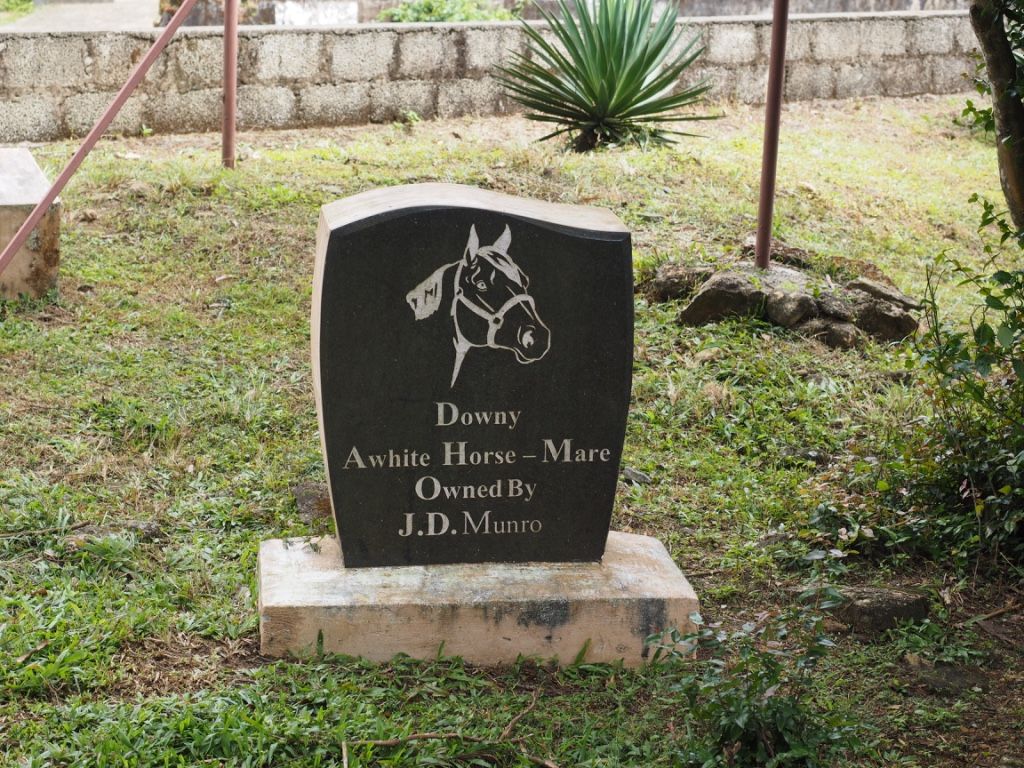There is a memorial to his wife Henrietta (Baker) in the church. An account of this family can be found in “Above the Heron’s Pool” available from http://www.bacsa.org.uk/.
Of his four sisters, Amelia Maria and Catherine Ann died in childhood in London, Matilda Margaret in Ootacamund aged 21, and Theodosia Alexandrina in London aged 48. https://billiongraves.com/grave/Theodosia-Alexandrina-Petman/1277964
From http://www.royalretreat.co.in/munnar_history.html
Munnar came to be known to the outside world in the 1870s with the visit of the British Resident of the then Travancore kingdom John Daniel Munro. Munro, who visited the place as part of settling the border dispute between Travancore and the nearby state of Madras literally fell for the beauty of the region. Though the Munnar region fell under the jurisdiction of the Travancore kingdom, it was the jenmam land of Poonjar royal family. Since it was a ‘jenmam land’ the royal family enjoyed absolute powers over the land as the landlord.
Munro had a great interest in plantation. Of the several hills in the region, he found the Kanan Devan hills with high potential for plantation crops. Without wasting any time Munro visited the Poonjar Palace and met the then head of the royal family, Rohini Thirunal Kerala Varma Valiya Raja, fondly called as Kela Varma Raja. The entrepreneur in Munro won the confidence of Kela Varma Raja and he agreed to lease out Kanan Devan hills to Munro for a handsome payment.
Thus in 1877, Poonjattil Koickal Rohini Thirunal Kerala Varma Valiya Raja leased out the Kanan Devan hills comprising about 1,36,600 acres of land to John Daniel Munro for an annual lease rent of Rs. 3,000 and a security deposit of Rs. 5,000.
Munro formed the North Travancore Land Planting & Agricultural Society in 1879. Members of the society started cultivation of crops, including coffee, cardamom, cinchona and sisal in various parts of the region. However these crops were later abandoned when tea was found to be the ideal crop for the region. A.W. Turnor was the first to start cultivation.
Interestingly, it was not Munro or Turnor who started tea cultivation in Munnar. The credit goes to A.H. Sharp, a European planter, in 1880. Sharp planted tea in around 50 acres of land at Parvathy, which is now part of the Seven Mallay estate. In 1895, Finlay Muir & Company (James Finlay and Company Limited) entered the scene and bought 33 independent estates. The Kannan Devan Hills Produce Company was formed in 1897 to manage these estates.
There is a memorial to his wife Henrietta (Baker) in the church. An account of this family can be found in “Above the Heron’s Pool” available from http://www.bacsa.org.uk/.
Of his four sisters, Amelia Maria and Catherine Ann died in childhood in London, Matilda Margaret in Ootacamund aged 21, and Theodosia Alexandrina in London aged 48. https://billiongraves.com/grave/Theodosia-Alexandrina-Petman/1277964
From http://www.royalretreat.co.in/munnar_history.html
Munnar came to be known to the outside world in the 1870s with the visit of the British Resident of the then Travancore kingdom John Daniel Munro. Munro, who visited the place as part of settling the border dispute between Travancore and the nearby state of Madras literally fell for the beauty of the region. Though the Munnar region fell under the jurisdiction of the Travancore kingdom, it was the jenmam land of Poonjar royal family. Since it was a ‘jenmam land’ the royal family enjoyed absolute powers over the land as the landlord.
Munro had a great interest in plantation. Of the several hills in the region, he found the Kanan Devan hills with high potential for plantation crops. Without wasting any time Munro visited the Poonjar Palace and met the then head of the royal family, Rohini Thirunal Kerala Varma Valiya Raja, fondly called as Kela Varma Raja. The entrepreneur in Munro won the confidence of Kela Varma Raja and he agreed to lease out Kanan Devan hills to Munro for a handsome payment.
Thus in 1877, Poonjattil Koickal Rohini Thirunal Kerala Varma Valiya Raja leased out the Kanan Devan hills comprising about 1,36,600 acres of land to John Daniel Munro for an annual lease rent of Rs. 3,000 and a security deposit of Rs. 5,000.
Munro formed the North Travancore Land Planting & Agricultural Society in 1879. Members of the society started cultivation of crops, including coffee, cardamom, cinchona and sisal in various parts of the region. However these crops were later abandoned when tea was found to be the ideal crop for the region. A.W. Turnor was the first to start cultivation.
Interestingly, it was not Munro or Turnor who started tea cultivation in Munnar. The credit goes to A.H. Sharp, a European planter, in 1880. Sharp planted tea in around 50 acres of land at Parvathy, which is now part of the Seven Mallay estate. In 1895, Finlay Muir & Company (James Finlay and Company Limited) entered the scene and bought 33 independent estates. The Kannan Devan Hills Produce Company was formed in 1897 to manage these estates.
Inscription
In Memory of
JOHN DANIEL MUNRO
Born Sept 11th 1833
Died Feb 18th 1895
"There shall be no more death"
Family Members
Advertisement
Advertisement







